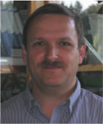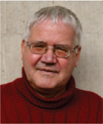Electrospinning of Nanofibres: Towards New Techniques, Functions, and Applications
Roland Dersch A , Martin Graeser A , Andreas Greiner A and Joachim H. Wendorff A BA Hans-Meerwein-Strasse, Department of Chemistry and Center of Material Science, Philipps-University, 35032 Marburg, Germany.
B Corresponding author. Email: wendorff@staff.uni-marburg.de

Dr. Roland Dersch has studied Chemistry at the Philipps-University in Marburg and in Edinburgh. Both his Diploma Thesis and his Ph.D. Thesis, performed in the group of Professor J. H. Wendorff, were concerned with the construction of electrospinning devices, with electrospinning of synthetic and natural polymers to nanofibres and the application of the resulting nanofibres in various areas including filter applications and medicinal applications such as tissue engineering or, more recently, inhalation therapy. |

Martin Graeser studied Chemistry at the University of Marburg where he did his diploma in 2004. For work in the field of polymer physics in the group of Professor J. H. Wendorff he earned his doctorate there in 2007. His research interests during the Ph.D. thesis were the preparation of metal and metal–polymer composite fibres by electrospinning for applications in catalysis, thermoelectrics, and magnetics. |

Andreas Greiner studied Chemistry at the University of Marburg and earned his doctorate there in 1988. After a postdoctoral stay with D. Perason and H.-W. Schmidt in Santa Barbara, he returned to Marburg, where he completed his habilitation in macromolecular chemistry in 1995. In the same year, he took up a professorship at the University of Mainz, and in 2000, he became Professor of Macromolecular Chemistry in Marburg. Together with W. Heitz and J. H. Wendorff, he directs the TransMIT Center for Polymer Research and Nanotechnology. His research interests include the classical synthesis of monomers and polymers, the synthesis of functional polymers, nanotechnology, as well as the application of polymers in optics, electronics, and medicine. |

Joachim H. Wendorff received his doctorate from the University of Marburg in 1969 for work in the field of polymer physics with F. H. Müller. After a postdoctoral stay with F. P. Price in Amherst, he became a research assistant with E. W. Fischer at the University of Mainz. In 1982, he completed his habilitation in physical chemistry there. From 1976 to 1991, he headed the Physics Department at the German Polymer Institute (DKI) in Darmstadt. In 1990, he took up a professorship in physics at the TH Darmstadt, and in 1991, he moved to a professorship in physical chemistry at the University of Marburg. His research interests include functional polymers, liquid crystals, polymer alloys, molecular reinforcement, nanostructuring, and electrospinning. |
Australian Journal of Chemistry 60(10) 719-728 https://doi.org/10.1071/CH07082
Submitted: 19 March 2007 Accepted: 19 July 2007 Published: 9 October 2007
Abstract
Nanofibres, core–shell nanofibres, as well as hollow nanofibres and nanotubes based on polymers, serve as a platform for a broad range of applications as filters, textiles, in photonics, sensors, catalysis, or in medicine and pharmacy. Such nanoobjects become available by techniques such as the well-known electrospinning and the more recently developed co-electrospinning of nanofibres. Electrospinning takes place in the latter case by two or more concentrically arranged dies that yield core–shell fibres or fibres with droplet-like inclusions arranged along the centre of the fibres, where the inclusions are composed of polymers, low-molar-mass synthetic functional units, or molecules of biological origins such as proteins. Furthermore, template methods have been developed using electrospun nanofibres or a porous substrate, which yield core–shell fibres of complex architectures, with or without gradient structures or hollow nanofibres and nanotubes. These techniques are not restricted to polymers of synthetic and natural origin, but are able – based on precursor substances – to deliver nanofibres and nanotubes also composed of metals, glasses, and ceramics. Furthermore, these preparation techniques allow the direct introduction into these nanostructures of specific functional compounds such as semiconductor or catalytic nanoparticles and chromophores, in addition to enzymes, proteins, microorganisms, etc. during the preparation process in a very gentle way. Of particular interest are such nanostructures in medicine and pharmacy, for instance, as scaffolds for tissue engineering or as drug-delivery systems for tumour therapy.
Acknowledgements
We would like to thank M. Bognitzki, U. Boudriot, M. Gernsheimer, B. Goetz, M. Hellwig, A. Holzmeister, O. Kriha, A. Schaper, and D. Weber for their contributions.
[1]
[2]
Z.-M. Huang,
Y.-Z. Zhang,
M. Kotaki,
S. Ramakrishna,
Compos. Sci. Technol. 2003, 63, 2223.
| Crossref | GoogleScholarGoogle Scholar |
| Crossref | GoogleScholarGoogle Scholar |
| Crossref | GoogleScholarGoogle Scholar |
| Crossref | GoogleScholarGoogle Scholar |
| Crossref | GoogleScholarGoogle Scholar |
| Crossref | GoogleScholarGoogle Scholar |
| Crossref | GoogleScholarGoogle Scholar |
| Crossref | GoogleScholarGoogle Scholar |
| Crossref | GoogleScholarGoogle Scholar |
| Crossref | GoogleScholarGoogle Scholar |
| Crossref | GoogleScholarGoogle Scholar |
| Crossref | GoogleScholarGoogle Scholar |
| Crossref | GoogleScholarGoogle Scholar |
| Crossref | GoogleScholarGoogle Scholar |
| Crossref | GoogleScholarGoogle Scholar |
| Crossref | GoogleScholarGoogle Scholar |
| Crossref | GoogleScholarGoogle Scholar |
| Crossref | GoogleScholarGoogle Scholar |
| Crossref | GoogleScholarGoogle Scholar |
| Crossref | GoogleScholarGoogle Scholar |
| Crossref | GoogleScholarGoogle Scholar |
| Crossref | GoogleScholarGoogle Scholar |
| Crossref | GoogleScholarGoogle Scholar |
| Crossref | GoogleScholarGoogle Scholar |
| Crossref | GoogleScholarGoogle Scholar |
| Crossref | GoogleScholarGoogle Scholar |
| Crossref | GoogleScholarGoogle Scholar |
| Crossref | GoogleScholarGoogle Scholar |
| Crossref | GoogleScholarGoogle Scholar |
| Crossref | GoogleScholarGoogle Scholar |
| Crossref | GoogleScholarGoogle Scholar |
| Crossref | GoogleScholarGoogle Scholar |
| Crossref | GoogleScholarGoogle Scholar |
| Crossref | GoogleScholarGoogle Scholar |
| Crossref | GoogleScholarGoogle Scholar |
| Crossref | GoogleScholarGoogle Scholar |
| Crossref | GoogleScholarGoogle Scholar |
| Crossref | GoogleScholarGoogle Scholar |
| Crossref | GoogleScholarGoogle Scholar |
| Crossref | GoogleScholarGoogle Scholar |
| Crossref | GoogleScholarGoogle Scholar |
in press.
in press.
| Crossref | GoogleScholarGoogle Scholar |
| Crossref | GoogleScholarGoogle Scholar |
| Crossref | GoogleScholarGoogle Scholar |
| Crossref | GoogleScholarGoogle Scholar |
| Crossref | GoogleScholarGoogle Scholar |
| Crossref | GoogleScholarGoogle Scholar |
| Crossref | GoogleScholarGoogle Scholar |
| Crossref | GoogleScholarGoogle Scholar |



